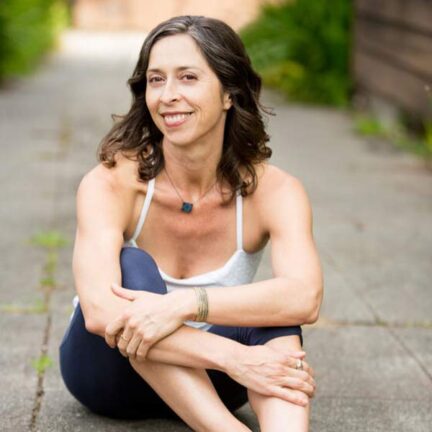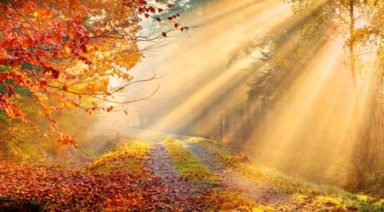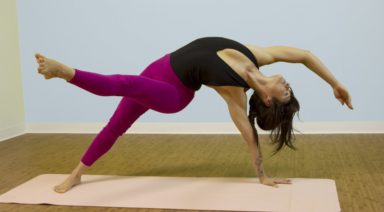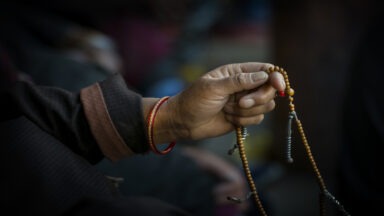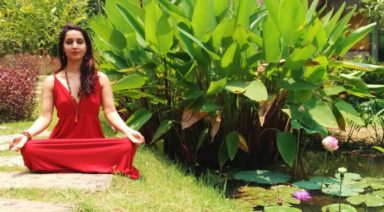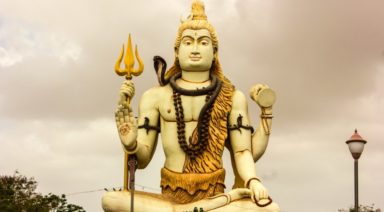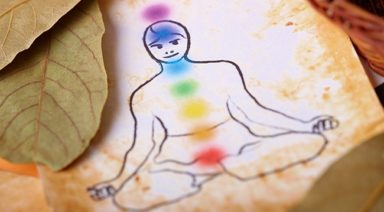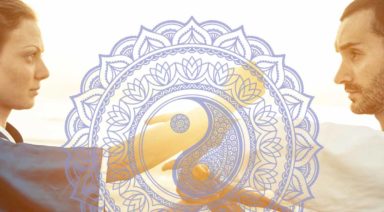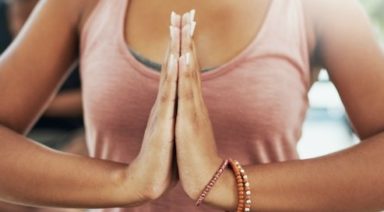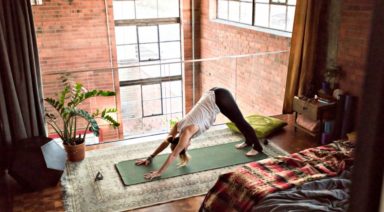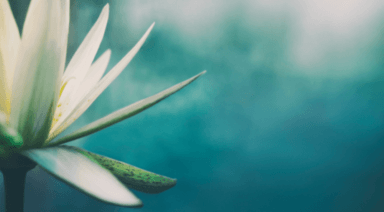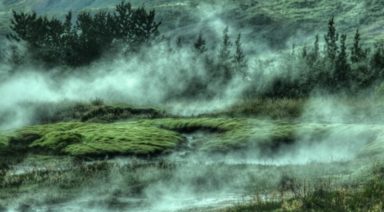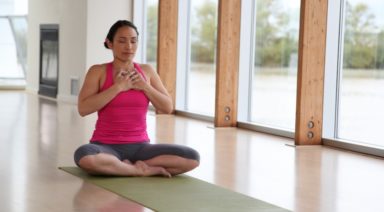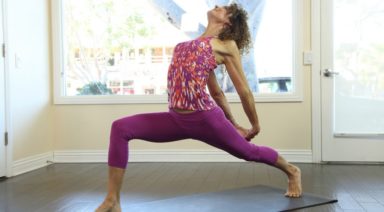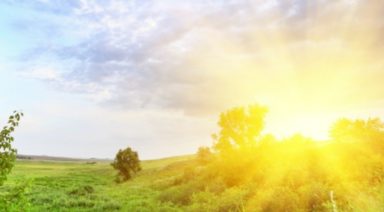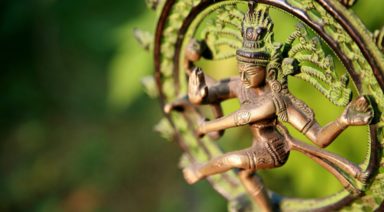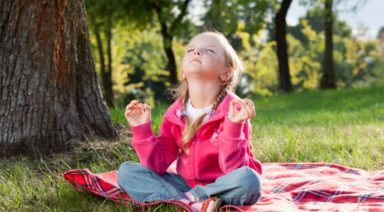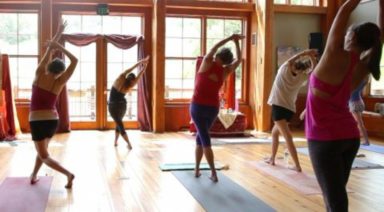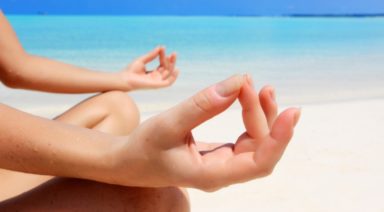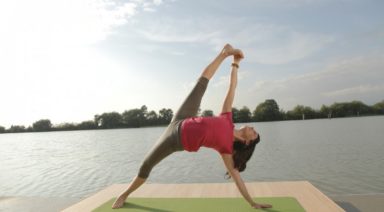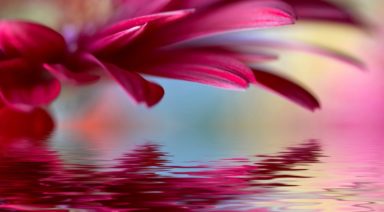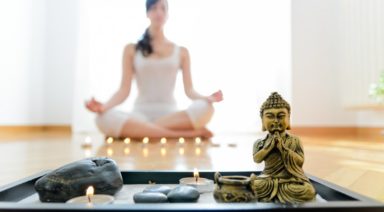The 3 Pillars of Life: Brahmacharya
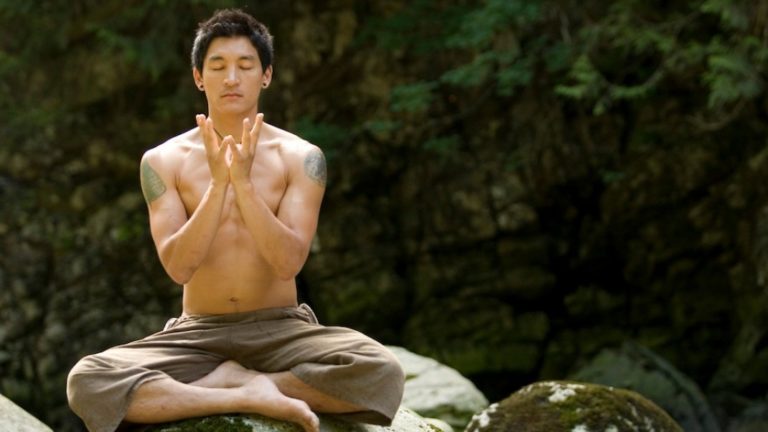
Over the last few months I have been exploring the theme of the 3 Pillars—right diet, sleep, and brahmacharya—in my classes and personal practice to help ease into this new fall season with a stronger commitment to my self-care and Ayurveda. My first article in this trilogy emphasized diet and introduced you to the Ayurvedic term agni, which describes your digestive fire; it included a few recipes to enhance your digestion if it is weak or irregular. The second article highlighted sleep and offered some practical tips on how to improve your sleep with self-care practices and diet.
This month, I will shed some light on brahmacharya as well as creativity and their role in upholding the three pillars. Brahmacharya is traditionally a practice that emphasizes management of one’s sexual energy. From the yogic perspective, excessive sexual activity will weaken or exhaust your vital energy. Now just to be clear, the idea of brahmacharya is not to make us all monks or withdraw completely from all sexual activity—it’s actually to raise your awareness that engaging in too much sexual activity will reduce your shukra (sexual energy, reproductive fluids), which is necessary to build ojas. Ojas is the word Ayurvedic practitioners use to describe the most refined by-product that is created by the food we consume after it is digested to build up our tissues (dhatus: fluids, blood, muscle, fat, bone, nervous system, reproductive fluids). Excessive sex and stress will deplete ojas in the sperm and ovum as well as curtail ojas from entering the heart. Ojas is technically not considered a tissue of the body; it’s more like the strength or quality intrinsic to a tissue that gives you vigor, strengthens your immune system, provides stability to the body and mind, and keeps you juicy and plump like a newborn baby.
The Ayurvedic yogis believe that reproductive fluids are the final step in a 30-day process that creates the dhatus; as noted above, these fluids are one of the dhatus and are the ones that are produced last. Unfortunately, during the thirty days, many factors can compromise the production of the dhatus; if this occurs then it will lead to a depletion of ojas, contributing to the reduction of vigor, immunity, radiant glow, and longevity we naturally desire. Yet, if all goes well through the stages of food to dhatus transformation, our tissues will be strong and we will feel a surplus of energy that moves us to create or be creative on a regular basis.
What creative outlets do you have in your daily life? What do you love to do in your free time? In my opinion, responding to the urge to create when it arises is one of the most loving things you can do for soul. If brahmacharya is part of your regular practice, there will be a surplus of energy to explore in life, perhaps to ignite your next poem, photograph, or song. With too much sexual activity or stress it’s not uncommon to lose your libido or urge to be creative. As daunting as it might sound to add one more practice to your already busy life, I find that the rhythm of daily creative practice becomes its own habit and therefore grows easier over time.
As we head into the cooler, darker fall and winter seasons that invite us into the warmth of our homes, we’re provided with a great opportunity to evaluate our relationship to brahmacharya and creativity. Trust that whatever amount of creative time arises each day is the right amount. It’s the intention that counts. Trust that there is room in your day to practice and that you deserve this creative time. Antoine de Saint-Exupery has said, “A single new habit can awaken within us a stranger totally unknown to us.” This was my personal experience as I discovered and danced with this beautiful new stranger, who was truly none other than creative facets of the unexplored me. If you are ready to meet and embrace the creative divine in you, I invite you to undertake a daily creative ritual. Just as much as we need good food and sleep to be healthy and productive, I believe we also need to have space to do what we love in order to feel our best.
Autumnal Equinox: Ritual Through Yoga
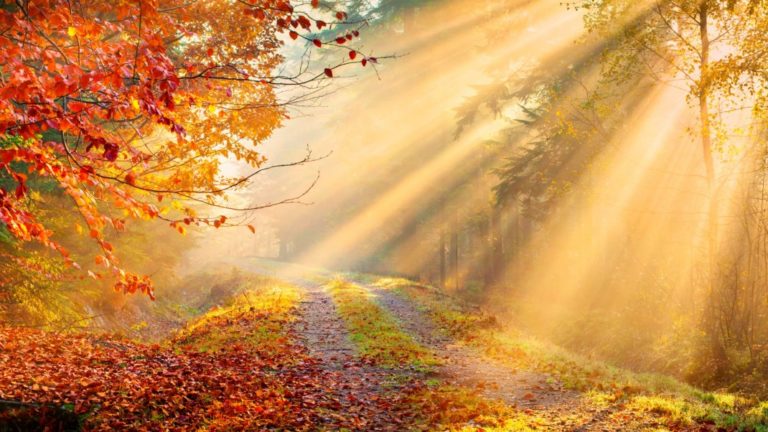
The autumnal equinox marks one of two specific positions of Earth during its year-long orbit around the sun where the celestial equator (the spatial projection of the plane between northern and southern hemispheres) passes through the center of our solar star. In these equinox positions, our planet’s axis is directed neither toward nor away from the sun and the boundary between light and shadow is perpendicular to the equator.
During this significant, albeit brief, moment of cosmic equanimity, the planet is divided into approximately equal parts night and day, hence the word “equinox” with Latin roots meaning “equal night.”
The Macrocosm: What Happens Outside During an Equinox?
On an equinox, the sun spends approximately the same amount of time above and below the horizon; rising due east, setting due west, and appearing directly overhead at midday. The word equinox, however, is something of a misnomer. Due to the curvature of the Earth and the composition of our atmosphere, the amount of visible sunlight reaching a particular location varies with the observer’s distance from the equator. For this reason, the global equinox occurs with slightly different timing than the local equilux, which is the latitude-specific date on which the sun rises and sets at the same time, just 12 hours apart.
An Invitation to Turn Within
As Earth progresses along its orbit, passing through a balanced equinox point at the end of summer, its axis begins to lean away from the sun, bringing the southern hemisphere closer to, and moving the northern hemisphere farther away, from our radiant star. As a result, the sun’s rays hit the northern hemisphere at an indirect angle and less solar energy reaches this part of the world.
This waning sunlight initiates a distinct and perceptible shift in our terrestrial environment as the sweetness of summer begins to fade and the top half of our planet retreats from the heat of the sun.
The autumnal equinox is our invitation to turn toward the light within.
The Earth, like our bodies, breathes with unyielding rhythm and there is no better time to observe this divine truth than during a change of seasons when the breath wave of our planet can be experienced through all the senses. This yearly cycle, mirrored in every breath we take, is described in the table below.
When considering how the planet breathes, the autumnal equinox occurs during the inspiration cycle which can be likened to puraka or the inhalation. With the downward-moving inhale, all elements are magnetized toward the Earth. That which was exhaled during the effulgence of summer is reintegrated. Plants surrender their vegetation in response to shorter days and cooler temperatures. Their leaves drained of life-giving sustenance, eventually fall in the ultimate display of impermanence.
Moisture and heat are absorbed into the ground and air currents begin to circulate near the surface to catalyze these natural processes. As vehicles of the universal breath, we can interpret these environmental cues as a reflection of our internal seasons and emulate the perennial wisdom of the planet by letting go, slowing down and taking time for regenerative practices
The Microcosm: What Happens Inside During an Equinox?
A Cosmic Dunk
The autumnal equinox is the beginning of a cosmic dunk into darkness. With each passing day, nighttime arrives a little earlier and lingers into our waking hours. With this gift of environmental down-time, we are encouraged to welcome and not resist the centripetal force of consciousness that pulls us inward. This is a time for meditation and rest. Use this opportunity to surrender to your inner gravity, ask difficult questions, and listen deeply for what arises. Get curious as you dive into the darkness.
This is the call of the Dark One, The roar of life seeking its source. The union you long for is within reach.
Throw off all hesitation. Become one with the fear. Plunge into uncanny blackness,
Eyes wide open, As if there were no other choice. Vibrating with fierce tenderness, Breathe intimately With the Source of Infinite Space.
Translation by Lorin Roche, Vijnana Bhairava Tantra — Yukti Verses |87|
Summon Your Shadow Side
Occurring roughly in the middle of a 6-month period of waning light, the autumnal equinox represents a confluence of life and death. In agrarian societies, the equinox signals the completion of the harvest season, the fruits of which are gathered and stored for the barren winter months. The fullest expression of vibrant light and activity in summer gives way to the stillness of shadow in fall.
As a complement to the light, our shadow side often carries a negative weight when it is mistakenly interpreted as comprising the most troubling parts of ourselves and our experience. The truth is, however, the shadow side encompasses all things outside the light of consciousness, good and bad. Our collective unconscious harbors everything that is unseen or hidden from awareness, like the dark side of the moon. So, in the same way, we might conceal our least desirable qualities, we may also unconsciously hide our brightest attributes on account of shadow forces like shame or lack of self-esteem.
Shadow work is as important to revealing our light as it is to release our darkness and the time to begin this work is now, between the fall equinox and the winter solstice. This is a time to excavate anything that may be churning beneath the surface, a time to invite such thoughts and emotions to gently rise and dissolve. As a guide, you may consider the following contemplation questions either in meditation or in journaling to facilitate this inner exploration.
- What has been my personal harvest this year, what has grown into full expression and brought me joy? Begin each sentence with I celebrate…
- What seeds of insight will I collect and re-plant in the next season? I nourish…
- Where am I holding back or ceding to doubt? What fears are stalling me? I am afraid of…
- Where am I creating struggle or holding on? How can I conserve energy by releasing any unnecessary effort in this cycle? I release…
- Am I housing any latent anger towards myself or others? How can I liberate myself from it? I forgive…
- Do I presently feel ashamed or embarrassed by any behaviors or decisions I have made? How can I lay them to rest? I accept…
- Do I feel guilty for any of my thoughts, words, or actions? How can I make a conscious change? I resolve…
- If my body were to speak, what would it say to me? I hear…
Autumn: The Vata Season
As explained in Ayurveda, Vata is the predominant constitution or dosha during the fall season where the elements of air and space are prevalent. With inherently cool, dry, light, and mobile qualities, Vata is most susceptible to aggravation at this time of year when similar qualities are increasing in nature.
With a direct relationship to Prana, the source of life inside and outside the body, Vata governs all movement and circulation. When in excess, mobility in the body may result in dryness, joint pain, insomnia, and a general feeling of unease. As a result, the positive energy associated with a balanced Vata dosha, the energy that inspires creativity, intellect, and activity, can quickly devolve into fear, anxiety, and irritability. To pacify Vata during the upcoming season, focus on the balancing qualities of earth, fire, and water.
- Get Grounded. Contrary to societal norms, autumn is a time to slow way down. All too often we find the end of the year becoming a time of hurry and overwork. Instead, take every opportunity to reduce your commitments, keep only what is absolutely necessary on your personal, professional, and social calendars. Get more rest by eating an earlier evening meal and committing to a regular bedtime. Develop a fall rhythm and stick to a ritual routine. Be it exercise, nutrition, or self-care, Vata is pacified by steadiness and consistency.
- Stoke the Inner Fire. With decreasing warmth available from the sun, make every effort to minimize the loss of internal heat. Dress warmly, taking care to always cover the head and ears, hands and feet when cold winds are present. Favor warm, cooked foods over raw and allow time for eating as Vata-regulated digestive functions are susceptible to imbalance when we eat on the go. Refrain from drinking cold water or juices and drink room temperature or hot beverages instead.
- Saturate the Senses. Apply Vata-pacifying sesame or olive oil generously after showering as hot water tends to dehydrate the skin. As you lubricate the joints and muscles, use gentle pressure with the hands and fingers to perform self-massage (abhyanga, which grounds upward-moving energy to stabilize Vata. Cook with heating spices like cumin, ginger, and fennel to maintain a steady digestive fire and diffuse warm, earthy scents like geranium, patchouli, and rose. Listen to slow rhythmic music with heavy drumbeats and deep melodic chanting with vibrations that resonate in the lower chakras, drawing energy closer to the earth. Minimize over-stimulating the eyes and during meditation, visualize deep reds and browns.
Practice Regenerative Yoga in Autumn
As we approach the transition from summer to fall, Ayurveda prescribes a gradual shift from cooling breath and postural practices that pacify pitta to those that heat internally to strengthen the fire element in preparation for the colder climate ahead. The Vata dosha also benefits from postures that keep us close to the ground, particularly those that draw energy from the upper centers of the body including the head, throat, and heart, into the lower centers of the belly, sacrum, and hips.
Observe the following guidelines in your practice with steadiness and conscious rhythm to bring balance during times of elevated mobility and stress.
- Soft Eyes. Maintain a soft gaze during asana and pranayama, absorb earth energy through the eyes by looking down in postures where the tendency is to look up.
- Keep it Simple. Avoid overly complex sequences and movements which can over-stimulate intellectual thinking and aggravate vata.
- Root Down. Embrace the earth with all points of contact by pressing down firmly to feel the reciprocal support of the ground, particularly with the hands and feet.
- Get Prone. Compress the low belly and pelvis in prone backbends to alleviate any accumulation of vata that generally occurs here when out of balance.
- Marinate. After warming from the inside out, allow the body to marinate in seated or reclined hip openers and gentle twists, focusing on conscious relaxation rather than activation.
- Surrender. Melt into deep forward bends, closing the throat and resting the third eye on the earth or a block where possible.
Autumnal Equinox Yoga Sequence: Moving Meditation for the Whole Body
Heart
Let the focus of this practice be illuminating the fire of the heart for the upcoming season of darkness. With steady, focused effort, visualize a magnetic flame that draws heat and energy into the very core of your being, burning brighter with every inhale. Withdraw from distracting thoughts and listen to the rhythm of your breath. Allow the pace to be slow and smooth, transitioning mindfully from one pose to the next.
Breath
Practice this sequence with an emphasis on samavrtti pranayama or equal rhythm breathing. With longer time spent in postures, you may elect to count the length of the inhale to inform the exhale. Let this action be fluid and centering, without rigidity or force. Notice how the breath changes and expands throughout your practice. You will also have an opportunity to practice several rounds of Nadi sodhana, alternate nostril breathing toward the end of practice to bring the subtle body into balance.
Body
When attempting to balance the Vata dosha with asana practice, it can be counterproductive to begin immediately with slow, grounding postures and long holds, despite their potential to alleviate Vata-induced distress. When the mind is fluctuating and the body is agitated, any request to be still might be met with frustration and resistance. In this sequence, we begin instead, with strong and simple standing movements to heat the body and discharge any excess nervous energy before settling into deeper postures for longer periods of time. You may also notice the absence of the basic vinyasa, by design, as it can cause us to rush and get ahead of the breath.
The standing waves of class incorporate two complete mandala flows, one initiating with the right (solar) side of the body and one with the left (lunar) side to symbolize the balance of sunlight and shadow available during the equinox.
The standing postures offered will focus on pressing the feet firmly into the ground while stabilizing the gaze to prepare for single-leg balance asanas before lowering to the earth for deeply meditative hip openers and forward bends. The sequence closes with a gentle downward facing twist and optional downward facing Savasana for grounding.

